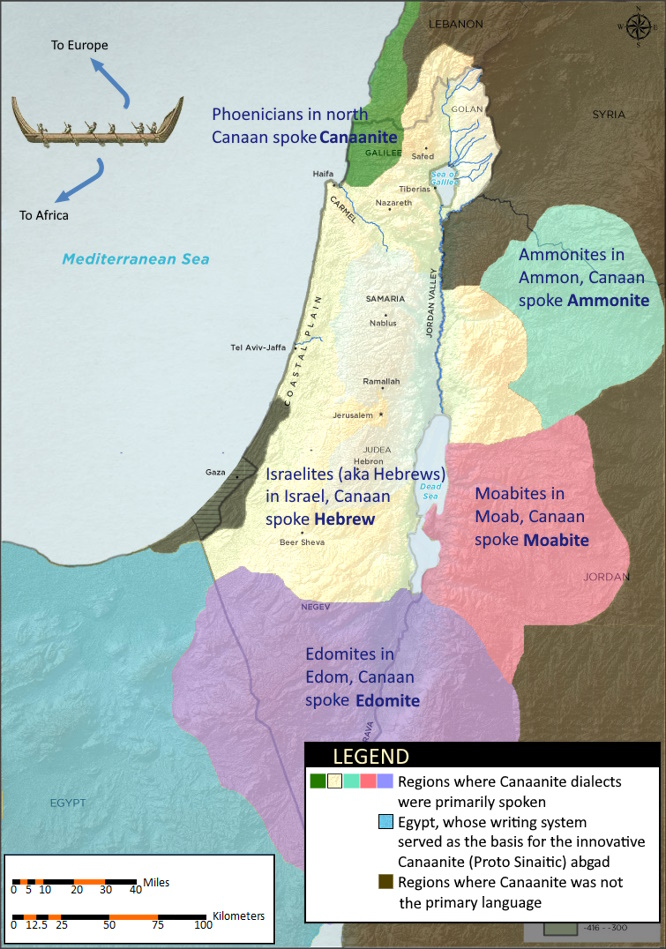
Hebrew’s Canaanite Roots

Hebrew was the language of the Israelites (aka the Hebrews) who lived in Canaan, an ancient region in the eastern Mediterranean. Canaan roughly corresponds to modern-day Israel, the Palestinian Authority, Lebanon, and parts of Jordan and Syria.
In 135 CE, after the Bar Kokhva revolt by the Jews against the occupying Roman forces, the empire renamed the region Syria Palaestina. This measure was implemented in an effort to weaken local Jewish identities and diminish the significance of their ties to the land.
A Shared Land
The Israelites were one of several culturally distinct, indigenous Canaanite groups. These groups initially shared a parent language, which later diversified into distinct yet often mutually-intelligible Canaanite languages:
- Phoenicians: This maritime culture famously brought their writing system to Greece, where it was adopted, modified, and ultimately gave rise to the Greek alphabet. Even in distant colonies, the Phoenicians identified as Canaanites or by their ancestral cities (e.g., Beirut, Sidon). It is likely that they referred to their language as “Canaanite” rather than the Greek-assigned exonym “Phoenician.”
- Israelites: Hebrew was the predominant language of the Israelite tribes and later the kingdoms of Israel and Judah. The Hebrew language and traditions of the Israelites have been preserved through the centuries by the Jewish people, ultimately giving rise to modern Hebrew in the 19th century CE.
- Ammonites: This culture, whose principal city was Rabbath Ammon (referred to as Philadelphia in the New Testament and today as Amman in Jordan), is now lost. The name Rabbath Ammon is still used in Hebrew for Amman.
- Moabites: Our knowledge of this group is limited, with the Mesha Stele being the only known extensive text in Moabite.
- Edomites: Another lost culture, its existence is corroborated by multiple sources.
Another group in the region, the Philistines, migrated from Greece or the Aegean region. Although they eventually settled in coastal Canaan, their distinct culture and linguistic heritage differed from those of the indigenous Canaanites.
Over time, the Canaanite peoples scattered across the globe. Of these cultural groups, only the Jews and Samaritans—descendants of the indigenous Israelites—have maintained continuous cultural and linguistic identities.